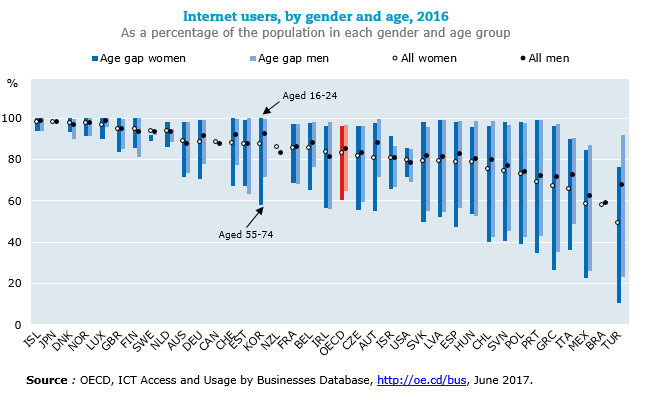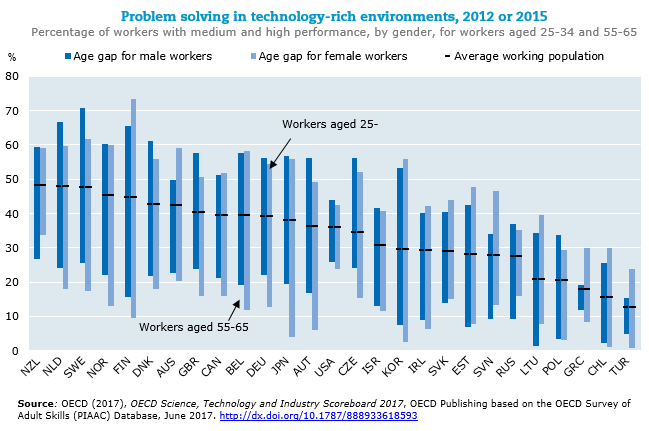Women in the digital era: Internet use and skills at work
March 2018 - As the world is #GoingDigital, structural changes across economies and societies deeply affect daily life for most people. Individuals, especially younger generations, are increasingly connected thanks to faster and cheaper access to broadband and the widespread use of mobile technologies. Jobs are being transformed too: the digital transformation at work is allowing new work arrangements to emerge, some of which hold the promise of more flexibility, in terms of workplace and working hours, for instance.
With the exception of Korea and Switzerland, across OECD countries, gender differences in Internet use tend to be more marked where uptake is generally lower. For example, in Turkey, only about 50% of women were Internet users in 2016 compared with 68% of men (Figure 1). Intergenerational differences, both for men and women, are also wider in countries with lower Internet uptake, and gender differences in Internet uptake are more marked for older generations.
The world of work will change as many jobs will change in nature and task content. This bears important consequences for the type of skills required to perform them. OECD analysis[i] finds that solid cognitive skills, coupled with the ability to solve problems and learn and think creatively, are key to adapting to the scale, speed and scope of digital transformations.
The OECD Programme for International Assessment of Adult Competencies (PIAAC) shows that across countries, younger workers exhibit better problem-solving skills in technology-rich environments than older workers, and “age gaps”are often wider for female workers (Figure 2). The problem solving skills of young women are particularly important to raising the average population scores in countries where 30% or less workers have a medium or high ability to solve problems in technology-rich environments. In Slovenia, Greece and Turkey, fro example, the share of young women who perform well in a tech environment is higher than that of young men across the board.
[i] OECD (2017), OECD Science, Technology and Industry Scoreboard 2017: The digital transformation, OECD Publishing, Paris, http://dx.doi.org/10.1787/9789264268821-en.
Documents connexes



